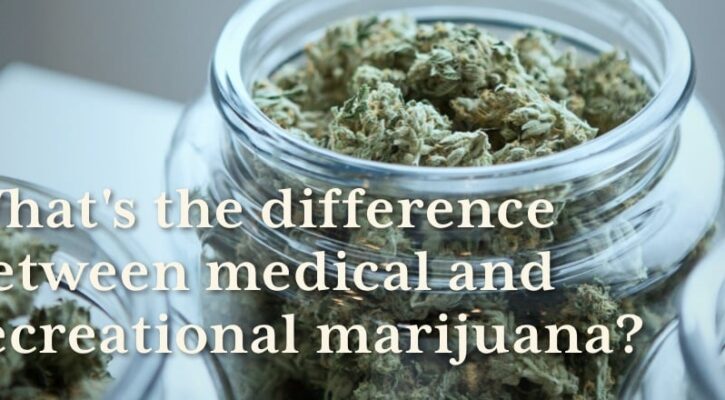
What’s the difference between recreational marijuana and medical marijuana
December 22, 2023
The recreational use of marijuana and medical marijuana differ in various ways. Recreational marijuana refers to the use of cannabis for recreational purposes, such as recreational activity or pleasure-seeking. Conversely, medical marijuana is used for therapeutic reasons and to treat symptoms of certain health conditions. The main differences between recreational and medical marijuana are in the way it is regulated, the types of cannabis products available, and the chemical composition of those products.
In recreational marijuana, there are fewer restrictions on what types of cannabis can be purchased and consumed. The recreational marijuana market consists mainly of dried flower buds that contain a range of different cannabinoids. On the other hand, medical marijuana is heavily regulated in terms of which medical conditions it can be prescribed to treat and what types of cannabis can be used. Medical marijuana typically contains higher levels of cannabidiol (CBD) and lower levels of tetrahydrocannabinol (THC), the psychoactive compound that makes recreational users feel “high.”
The main difference between recreational and medical marijuana, then, lies in the levels of specific cannabinoids, as well as the medical conditions they are used to treat. Both recreational and medical marijuana can be bought from dispensaries, but recreational marijuana is only legal in certain states and countries. Medical marijuana, on the other hand, has been approved for medicinal use in many states and countries. Ultimately, recreational marijuana is intended for recreational use, while medical marijuana is intended to treat specific medical conditions. Both types of marijuana should only be used in accordance with local laws.
In order to purchase recreational or medical marijuana, you must typically possess a valid medical card or other form of proof that you are legally allowed to purchase it. As the legal landscape surrounding recreational and medical marijuana continues to evolve, it is important to stay up-to-date on local laws and regulations.
Recreational marijuana tends to have higher levels of THC (tetrahydrocannabinol), the psychoactive compound in marijuana responsible for producing a “high” sensation. Medical marijuana, on the other hand, typically has lower levels of THC and higher levels of CBD (cannabidiol), a non-psychoactive compound that is believed to have health benefits.
The recreational use of marijuana can also be more expensive than medical marijuana due to taxation and other regulations surrounding recreational sales. In some states, recreational purchasers may not receive the same discounts as medical marijuana patients. In addition, recreational marijuana may only be available to those over 21 years of age, while some states permit medical marijuana use for those under 21.
It’s important to note the differences between recreational and medical marijuana in order to stay compliant with local laws and regulations. Know what you’re purchasing and understand the potential medical implications of recreational marijuana use. If you are considering using recreational marijuana, speak to your healthcare provider to learn more about potential risks and benefits. This can help ensure that recreational marijuana is used in a safe and responsible manner.
Ultimately, recreational and medical marijuana have different purposes and should be treated differently when considering use. It’s important to understand that recreational marijuana use may not have the same medical benefits as medical marijuana and should be used in accordance with local laws. Be sure to always consult a healthcare provider before using recreational marijuana. With the proper knowledge, recreational and medical marijuana can both provide enjoyable experiences when used responsibly.
